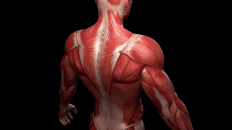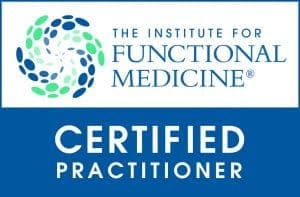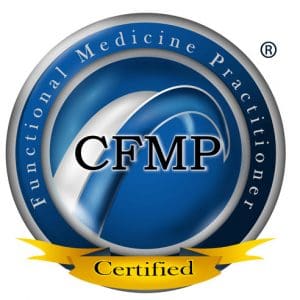The nucleotide-binding domain and leucine-rich repeat related (NLR) family, pyrin domain containing 3 (NLRP3) is a multimeric protein that recognizes different PAMPs and DAMPs. Furthermore, in the presence of potential danger, this inflammasome can perpetuate a potent inflammatory response by promoting IL-1b release. Consequently, this inflammatory environment promoted by an elevated level of IL-1b is linked to several pathologies like neurodegenerative diseases, autoinflammatory diseases, and metabolic disorders. However, natural compounds derived from foods can interfere with molecular mechanisms involved in NLRP3 activation, reducing the inflammatory state.
Â
The role of nutrition on NLRP3 activation.
The anti-inflammatory and antioxidant effects of the active compounds found in foods, propose an attractive therapeutic appr
The nucleotide-binding domain and leucine-rich repeat related (NLR) family, pyrin domain containing 3 (NLRP3) is a multimeric protein that recognizes different PAMPs and DAMPs. Furthermore, in the presence of potential danger, this inflammasome can perpetuate a potent inflammatory response by promoting IL-1b release. Consequently, this inflammatory environment promoted by an elevated level of IL-1b is linked to several pathologies like neurodegenerative diseases, autoinflammatory diseases, and metabolic disorders. However, natural compounds derived from foods can interfere with molecular mechanisms involved in NLRP3 activation, reducing the inflammatory state.
Â
Table of Contents
The role of nutrition on NLRP3 activation.
The anti-inflammatory and antioxidant effects of the active compounds found in foods, propose an attractive therapeutic approach to reduce NLRP3 activation.
EGCG:
Â
 Epigallocatechin-3-gallate is a polyphenol found in green tea, and its clinical applications are well-documented. Indeed, EGCG’s role as an antioxidant, free-radical scavenger and anti-inflammatory agent has positioned it as a nutraceutical. Furthermore, ECGC supplementation has been linked with NF-kB inactivation resulting in the downregulation of inducible nitric oxide synthase (iNOS), IL-6, and TNFa. Besides this, ECGC has proven to have anti-tumor effects.
Furthermore, the intervention with EGCG reduced NLRP3 inflammasome is related to renal inflammation due to the overproduction of IL-1b. Other ECGC clinical applications are:
- Prevention of lupus nephritis development in lupus erythematosus mice models.
- Activation of the Nrf2 antioxidant pathway, which in turn reduces NAD(P)H dehydrogenase and heme oxygenase -1, resulting in less renal oxidative stress.
- Attenuation of the NF-kB pathway, and reduction of NLRP3 activation resulting in caspase-1 and IL-1b inhibition.
- ECGC prevented the inflammatory response to contrast-induced nephropathy.
Genipin: Â
Genipin is used in traditional Chinese medicine and was originally isolated from Gardenia jasminoides (common name jasmine). In fact, Genipin was medically applied to protect the liver and gallbladder. In addition to this protective effect is has anti-hypertensive, anti-swelling properties and is recognized by its anti-inflammatory effects.
Genipin is the metabolized active form derived from geniposide by gut bacteria. Furthermore, its application inhibits mitochondrial uncoupling protein 2 (UCP2) as well as superoxide-activated UCP2-mediated proton leak occurring in a variety of diseases
Recently studies show that UCP-2 can upregulate NLRP3 expression but this activity was inhibited when genipin is administered. In addition, genipin can inhibit the release of IL-1b in LPS- primed cells.
Ginseng:
Â
The active metabolites of Ginseng root, ginsenosides, have been used to improve stamina, and treat gastric ulcers, diabetes, and cancer. Â Nevertheless, ginsenoside Rb1 and compound K show NLRP3 inhibitory properties.
Ginsenoside Rb1 is the most abundant bioactive compound found in Panax ginseng, and compound K is a gut bacteria-generated metabolite. Furthermore, their clinical application is widely studied in diabetic mouse models. Where the administration of ginsenoside Rb1 and compound K results in improved glucose tolerance, insulin sensitivity, and cognitive function. Consequently, these beneficial results are associated with a decreased level of NLRP3 activity, as well as caspase-1-ASC cleavage and IL-1b.
Conversely, ginsenoside PPT and ginsenoside Rg3, are associated with the inactivation of NLRP3 inflammasome cascade, and reduced secretion of IL-1b, respectively. Lastly, the combination of the beneficial effects derived from Ginseng administration may prevent hepatic fibrosis and reduced inflammation from neutrophil infiltration.
Bioactive compounds and Gut bacteria
The metabolic function of gut bacteria has important effects on the nutritional bioactive compounds. In fact, since most of the polyphenols are difficult to absorb, they have extensive interaction with the host bacteria. Furthermore, studies have shown that ketosis-induced bacteria may prevent chronic diseases, therefore the monitoring of ketosis plays an essential preventive role. In our office, we use a simple device called LEVL that can monitor ketosis with a simple breath.
Caffeic Acid Phenethyl Ester (CAPE):
This anti-inflammatory and antioxidant compound derived from honeybee propolis is an effective therapy to inhibit NRLP3 inflammasome activation. Indeed, the primary activity of CAPE in LPS- primed cells is to inhibit caspase-1 autocleavage, reducing IL-1b release.
Besides these NLRP3 inhibitory effects, CAPE has anti-swelling properties when administered to mice with MSU-induced gouty arthritis. Also, this same study reported a decreased neutrophil infiltration, as well as reduced levels of pro-inflammatory markers, IL-18 and IL-1b.
When CAPE was administered to LPS-treated mouse peritoneal macrophages, it inhibited TNF-a secretion. Also, 10s, a derivate from CAPE has proven to intervene NFkb pathway, which translates to the inhibition of the NLPR3 priming stage.
The involvement of NRLP3 inflammasome in the development of auto-inflammatory, auto-immune and metabolic conditions is undeniable. Indeed, is widely reported that inflammation is the underlying factor beneath all diseases. However, the interaction between inflammatory cascades and phytonutrients, polyphenols, flavanols, and their metabolites is key to modulate these reactions. In fact, inflammation and immunity, when tightly controlled, are protective modulators for the host. Therefore, the inclusion of these nutritional compounds brings that extra aid our body needs to keep a balanced inflammatory and immune response.
We have dig into the molecular response to PAMPs and DAMPs to understand what are the inflammatory cascades that promote diseases. It is clear that the interaction of our environment and our host response has a tight balance. There are a wide variety of factors we can’t control, like getting injured. However, we can control what we eat (I am not talking about calories). I invite you to introduce new foods, new colors, and new beverages that contain anti-inflammatory and antioxidant properties. – Ana Paola RodrÃguez Arciniega, MS
References:
Liu, Baolong, and Jiujiu Yu. “Anti-NLRP3 Inflammasome Natural Compounds: An Update.” Biomedicines 9.2 (2021): 136.
TÅ‘zsér, József, and Szilvia BenkÅ‘. “Natural compounds as regulators of NLRP3 inflammasome-mediated IL-1β production.” Mediators of Inflammation 2016 (2016).
Â
Additional Online Links & Resources (Available 24/7)


Online Appointments or Consultations:Â https://bit.ly/Book-Online-Appointment
Online Physical Injury / Accident Intake Form: https://bit.ly/Fill-Out-Your-Online-History
Online Functional Medicine Assessment: https://bit.ly/functionmed
Disclaimer
The information herein is not intended to replace a one-on-one relationship with a qualified health care professional, licensed physician, and is not medical advice. We encourage you to make your own health care decisions based on your research and partnership with a qualified health care professional. Our information scope is limited to chiropractic, musculoskeletal, physical medicines, wellness, sensitive health issues, functional medicine articles, topics, and discussions. We provide and present clinical collaboration with specialists from a wide array of disciplines. Each specialist is governed by their professional scope of practice and their jurisdiction of licensure. We use functional health & wellness protocols to treat and support care for the musculoskeletal system’s injuries or disorders. Our videos, posts, topics, subjects, and insights cover clinical matters, issues, and topics that relate and support, directly or indirectly, our clinical scope of practice.* Our office has made a reasonable attempt to provide supportive citations and has identified the relevant research study or studies supporting our posts. We provide copies of supporting research studies available to regulatory boards and the public upon request. We understand that we cover matters that require an additional explanation of how it may assist in a particular care plan or treatment protocol; therefore, to further discuss the subject matter above, please feel free to ask Dr. Alex Jimenez or contact us at 915-850-0900.  Read More…
Dr. Alex Jimenez DC, MSACP, CCST, IFMCP*, CIFM*, CTG*
email:Â coach@elpasofunctionalmedicine.com
phone: 915-850-0900
Licensed in Texas & New Mexico
General Disclaimer
Professional Scope of Practice *
The information herein on "Nutritional Modulation of NLRP3 Inflammasome (part 2)" is not intended to replace a one-on-one relationship with a qualified health care professional or licensed physician and is not medical advice. We encourage you to make healthcare decisions based on your research and partnership with a qualified healthcare professional.
Blog Information & Scope Discussions
Welcome to El Paso's Premier Wellness and Injury Care Clinic & Wellness Blog, where Dr. Alex Jimenez, DC, FNP-C, a Multi-State board-certified Family Practice Nurse Practitioner (FNP-BC) and Chiropractor (DC), presents insights on how our multidisciplinary team is dedicated to holistic healing and personalized care. Our practice aligns with evidence-based treatment protocols inspired by integrative medicine principles, similar to those found on this site and our family practice-based chiromed.com site, focusing on restoring health naturally for patients of all ages.
Our areas of multidisciplinary practice include Wellness & Nutrition, Chronic Pain, Personal Injury, Auto Accident Care, Work Injuries, Back Injury, Low Back Pain, Neck Pain, Migraine Headaches, Sports Injuries, Severe Sciatica, Scoliosis, Complex Herniated Discs, Fibromyalgia, Chronic Pain, Complex Injuries, Stress Management, Functional Medicine Treatments, and in-scope care protocols.
Our information scope is multidisciplinary, focusing on musculoskeletal and physical medicine, wellness, contributing etiological viscerosomatic disturbances within clinical presentations, associated somato-visceral reflex clinical dynamics, subluxation complexes, sensitive health issues, and functional medicine articles, topics, and discussions.
We provide and present clinical collaboration with specialists from various disciplines. Each specialist is governed by their professional scope of practice and their jurisdiction of licensure. We use functional health & wellness protocols to treat and support care for musculoskeletal injuries or disorders.
Our videos, posts, topics, and insights address clinical matters and issues that are directly or indirectly related to our clinical scope of practice.
Our office has made a reasonable effort to provide supportive citations and has identified relevant research studies that support our posts. We provide copies of supporting research studies upon request to regulatory boards and the public.
We understand that we cover matters that require an additional explanation of how they may assist in a particular care plan or treatment protocol; therefore, to discuss the subject matter above further, please feel free to ask Dr. Alex Jimenez, DC, APRN, FNP-BC, or contact us at 915-850-0900.
We are here to help you and your family.
Blessings
Dr. Alex Jimenez DC, MSACP, APRN, FNP-BC*, CCST, IFMCP, CFMP, ATN
email: coach@elpasofunctionalmedicine.com
Multidisciplinary Licensing & Board Certifications:
Licensed as a Doctor of Chiropractic (DC) in Texas & New Mexico*
Texas DC License #: TX5807, Verified: TX5807
New Mexico DC License #: NM-DC2182, Verified: NM-DC2182
Multi-State Advanced Practice Registered Nurse (APRN*) in Texas & Multistate
Multistate Compact RN License by Endorsement (42 States)
Texas APRN License #: 1191402, Verified: 1191402 *
Florida APRN License #: 11043890, Verified: APRN11043890 *
* Prescriptive Authority Authorized
ANCC FNP-BC: Board Certified Nurse Practitioner*
Compact Status: Multi-State License: Authorized to Practice in 40 States*
Graduate with Honors: ICHS: MSN-FNP (Family Nurse Practitioner Program)
Degree Granted. Master's in Family Practice MSN Diploma (Cum Laude)
Dr. Alex Jimenez, DC, APRN, FNP-BC*, CFMP, IFMCP, ATN, CCST
My Digital Business Card
RN: Registered Nurse
APRNP: Advanced Practice Registered Nurse
FNP: Family Practice Specialization
DC: Doctor of Chiropractic
CFMP: Certified Functional Medicine Provider
MSN-FNP: Master of Science in Family Practice Medicine
MSACP: Master of Science in Advanced Clinical Practice
IFMCP: Institute of Functional Medicine
CCST: Certified Chiropractic Spinal Trauma
ATN: Advanced Translational Neutrogenomics




















